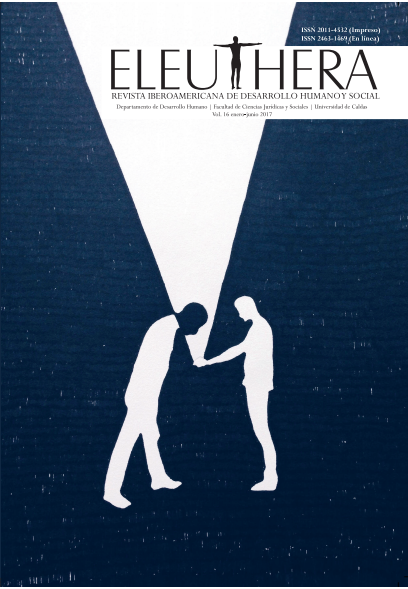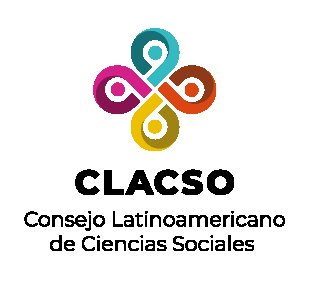Autores
Resumo
Objective. There are estimates of up to 18,000 children engaged with armed groups in Colombia. After disengaging from these groups, their reinsertion into society is a great challenge. We looked into the discourse approaches towards these children and their reinsertion processes. Methodology. We conducted 64 interviews with professionals from different organisations active in the integration processes of these children and conducted the “What’s the problem represented to be?” approach. Results. This approach allowed us to outline two explicit discourses. The law-oriented discourse showed to be strongly influenced by international standards, and was found to be dominant in the governmental reinsertion programme. The alternative-oriented discourse showed resistance to this line of thinking. Conclusions. Through the interplay of these discourses, organisations showed to be limited in their practical implementations whereby the many efforts put into the insertion processes, and the insertion of children into society itself are jeopardised.
Referências
Bacchi, C. (2009). Analysing policy: What’s the problem represented to be? Frenchs Forest, N.S.W: Pearson Education.
Betancourt, T.S., Borisova, I., Williams, T.P., Meyers-Ohki, S.E., Rubin-Smith, J.E., Annan,
J. & Kohrt, B.A. (2013). Research Review: Psychosocial adjustment and mental health in former child soldiers – a systematic review of the literature and recommendations for future research. Journal of Child Psychology and Psychiatry, 54(1), 17-36.
Cameron, S. (2010). Out of war: true stories from the front lines of children’s movement for peace in Colombia. New York: Unicef.
Centro Nacional de Memoria Histórica (2013). !Basta ya! Colombia: Memorias de guerra y de dignidad. Bogotá, Colombia: Informe general grupo de memoria histórica. Coalición contra la vinculación de niños, niñas y jóvenes al conflicto armado en Colombia.
[Coalico]. (2010). Informe alterno al informe del Estado colombiano sobre el cumplimiento del Protocolo Facultativo Relativo a la Participación de Niños en los Conflictos Armados. Retrieved from http://coljuristas.org/documentos/libros_e_informes/informe_alterno_ninos.pdf.
Euwema, M., de Graaff, D., de Jager, & Kalksma-Van Lith, B. (2008). Research with children in war-affected areas. In P.M. Christensen, & A. James (Eds.), Research with children: perspectives and practices (pp. 189-204). Oxon: Routledge.
González, G. (2016). Los niños de la guerra. Quince años después. Bogotá, Colombia: Aguilar.
Human Rights Watch [HRW] (2003). “You’ll learn not to cry”: Child combatants in Colombia. New York: Human Rights Watch.
Instituto Colombiano de Bienestar familiar [ICBF]. (2010). Niños, niñas y adolescentes desvinculados de los grupos armados organizados al margen de la ley. Sistema de información. Bogotá, Colombia: ICBF.
Kalyvas, S.N. (2001). “New” and “old” civil wars: A valid distinction? World Politics, 54(1), 99-118.
Machel, G. (1996). Promotion and protection of the rights of children: Impact of the armed conflict on children. United Nations. Retrieved from http://www.un.org/documents/ga/docs/51/plenary/a51-306.htm.
McCausland, E. (2010). Victorias de la paz. Diez historias de jóvenes que derrotaron la guerra. Bogotá, Colombia: ICBF y Organización Internacional para las Migraciones.
Richani, N. (2010). Fragmentation of sovereignty and violent non-state actors in Colombia. In K. Mulaj (Ed.), Violent non-state actors in world politics (pp. 27-44). London, England: Hurst & Company.
Santiago, L. (2007). Nacido para triunfar. Testimonio de un adolescente desvinculado de un grupo armado. Manizales, Colombia: Universidad de Caldas.
Springer, N. (2012). Como corderos entre lobos. Del uso y reclutamiento de niñas, niños y adolescentes en el marco del conflicto armado y la criminalidad en Colombia. Bogotá, Colombia: Springer Consulting Services.
Thomas, V. (2008). Overcoming Lost Childhoods: Lessons learned from the rehabilitation and reintegration of former child soldiers in Colombia. London, England: Y CARE International.
United Nations Human Rights. (2000, May). Optional Protocol to the Convention on the Rights of the Child on the involvement of children in armed conflict. Office of the High Commissioner for Human Rights A/RES/54/263. Retrieved from http://www.unhcr.org.
Villanueva-O’Driscoll, J., Loots, G. & Derluyn, I. (2013). Children disengaged from armed groups in Colombia: Disengagement processes in context. London, England: Versita.

 PDF (English)
PDF (English)
 FLIP
FLIP




























